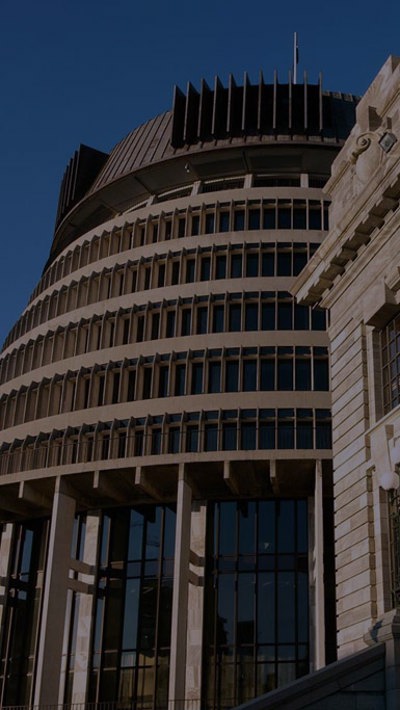Contents
The Ministry of Business, Innovation and Employment (MBIE) has closed public consultations on the proposed fourth edition of the Government Procurement Rules and is now finalising its advice to go to the Cabinet for approval in May.
We look at the likely shape of the changes and what they may mean for those bound by the rules, and counterparties contracting with the Public Sector. Our analysis focuses on those proposals identified as most significant by MBIE.
Application
The Procurement Rules apply throughout the broader public sector but with different degrees of compulsion and intensity from:
-
being required to apply them (e.g. the core public service, DHBs), to
-
Crown Research Institutes (CRIs) which must have regard to them, to
-
being expected to apply them (e.g. Fish and Game Councils), to
-
being encouraged to apply them (e.g. Regional, District and City Councils), to
-
other agencies which meet the Collaborative Contract Eligibility Test.
With the exception of the CRIs, the lists for all of these categories are quite long. They can be accessed here.
Outcomes beyond value for money – proposed Rules 16, 17, 18 and 19
A key change is a requirement on government agencies to consider broader outcomes beyond simple value for money. These are described as ‘secondary benefits’ and can be environmental, social, economic or cultural.
Four have been proposed for inclusion in the new rules:
- to increase access to government procurement for New Zealand providers, including Māori and Pasifika businesses
- to increase the size and skill level of the domestic construction sector workforce (discussed in more detail below)
- to improve conditions for workers by ensuring that good employers are not undercut by those who use poor labour practices to cut costs (this could extend to overseas manufacturers supplying the New Zealand market), and
- to support the transition to a net zero emissions economy.
Government may designate contracts or sectors where one or more of these outcomes must be implemented – e.g. assigning the lower emissions objective as a mandatory consideration in the purchase of new vehicles.
MBIE is currently developing guidance in relation to each outcome.
Chapman Tripp comment
Although these outcomes will be applied on a designated rather than a universal basis, contractors contracting with the public sector should keep in mind that these are government priorities and may be subject to specific evaluation criteria.
Construction skills and training
It is proposed that, when procuring construction works over $10m, agencies must take into consideration – as a weighted evaluation criterion – the skills development and training practices of the supplier and its subcontractors.
The consultation document states:
“When evaluating a supplier’s practices, you should look at what recruitment, retention, training and skills development they do in general. You should consider all levels and construction professions including, but not limited to, apprenticeships and equivalent training. You should also look at what further recruitment, skills development and training suppliers would commit to doing in the course of the contract”.
The following proposed rule is relevant.
Subcontracting – proposed Rule 25
This states that an agency should ask a prime contractor to meet certain procurement standards in its subcontracting, including how to “flow down expectations” around the four Broader Outcomes.
Chapman Tripp comment
We support this approach as being a positive step towards reducing the skills gap currently faced by the New Zealand construction industry.
Evaluating contractors on how they upskill and train staff creates an incentive to invest in their workforce. This could also be used to focus on opportunities for Māori, Pasifika and women in construction.
Infrastructure – proposed Rule 65
This Rule will come into play on infrastructure projects above $50m (a relatively low threshold) and will require very close engagement with the Interim Infrastructure Transactions Unit – to be replaced by the New Zealand Infrastructure Commission (NZIC), which the Government hopes will be operational from October this year.
Rule 65 previously dealt with Public Private Partnerships (PPPs) so the proposed change significantly broadens its ambit.
Agencies will be required to:
- involve the ITU/NZIC in the business case assessment and advice to Ministers
- offer the ITU/NZIC the opportunity to participate in relevant project steering and working groups, and in selection panels for all key advisor appointments in relation to the project
- use any standard form documentation developed by the ITU/NZIC, and consult it regarding any material proposed modifications.
Chapman Tripp comment
We are not surprised by the proposed introduction of standardised construction contracts for public sector procurement. It is something the construction industry has been calling for. But it does raise the question ‘where does that leave NZS’?
NZS contracts (namely 3910, but occasionally 3916) are currently used for the vast majority of public sector construction projects in New Zealand (and private sector projects too, for that matter). We expect the standardisation of public sector contracts will coincide with a refresh of the NZS suite.
Increased reporting requirements
Two big themes running through the proposed changes are increased reporting requirements and increased oversight.
Agencies must, for example, produce:
- Annual Procurement Plans (APPs) (proposed Rule 21) to MBIE outlining their proposed contract opportunities over the next 12 months and must update this as often as appropriate but at least twice a year, with updates due at 1 March and 1 October each year, and
- a Procurement Capability Index self-assessment at least annually by 1 October (proposed Rule 71), and
- a Significant Service Contracts Framework, reviewed and updated at least twice a year, with reporting dates again of 1 March and 1 October (proposed Rule 72).
Beyond the hands-on role anticipated for the NZIC:
- cabinet approval will be required for certain types of expenditure and lease or asset disposal proposals from departments, Crown Agents and other Crown Entities (proposed Rule 66), and
- depending on the size, scale and type of investment, agencies may be required to submit a project or programme to an investment review (proposed Rule 67), to be conducted by the State Services Commission, Treasury, Department of Prime Minister and Cabinet, and Functional Leaders appointed by the Cabinet to provide leadership across government on specific areas, including procurement.
Chapman Tripp comment
Agencies will need to ‘gear up’ for this increased reporting. It will also be interesting to see what thresholds are put in place to determine when central government review and approval will be required for a public sector procurement activity. A potential downside, which we hope will be avoided through sensible policy design, would be to have projects held up by unnecessary red tape.
A good procurement, is a streamlined procurement.










































































